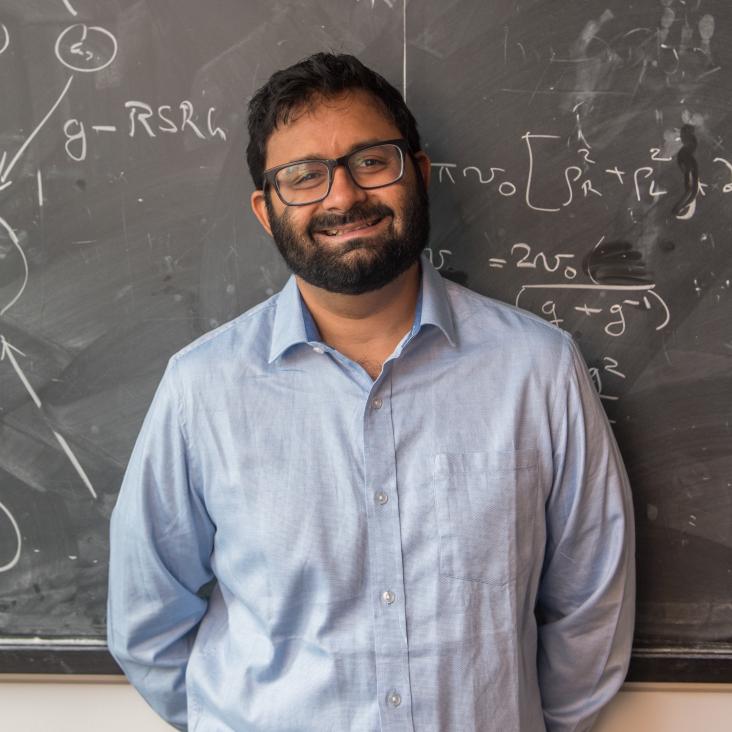Solvable Quantum Circuits in Tree+1 Dimensions
PRX Quantum American Physical Society
Spin skyrmion gaps as signatures of strong-coupling insulators in magic-angle twisted bilayer graphene
Nature Communications Nature Research (part of Springer Nature)
Statistical mechanics of dimers on quasiperiodic tilings
Physical Review B: Condensed Matter and Materials Physics American Physical Society
Abstract:
We study classical dimers on two-dimensional quasiperiodic Ammann-Beenker (AB) tilings. Despite the lack of periodicity we prove that each infinite tiling admits 'perfect matchings' in which every vertex is touched by one dimer. We introduce an auxiliary 'AB$^*$' tiling obtained from the AB tiling by deleting all 8-fold coordinated vertices. The AB$^*$ tiling is again two-dimensional, infinite, and quasiperiodic. The AB$^*$ tiling has a single connected component, which admits perfect matchings. We find that in all perfect matchings, dimers on the AB$^*$ tiling lie along disjoint one-dimensional loops and ladders, separated by 'membranes', sets of edges where dimers are absent. As a result, the dimer partition function of the AB$^*$ tiling factorizes into the product of dimer partition functions along these structures. We compute the partition function and free energy per edge on the AB$^*$ tiling using an analytic transfer matrix approach. Returning to the AB tiling, we find that membranes in the AB$^*$ tiling become 'pseudomembranes', sets of edges which collectively host at most one dimer. This leads to a remarkable discrete scale-invariance in the matching problem. The structure suggests that the AB tiling should exhibit highly inhomogenous and slowly decaying connected dimer correlations. Using Monte Carlo simulations, we find evidence supporting this supposition in the form of connected dimer correlations consistent with power law behaviour. Within the set of perfect matchings we find quasiperiodic analogues to the staggered and columnar phases observed in periodic systems.Supersymmetry on the honeycomb lattice: resonating charge stripes, superfrustration, and domain walls
Physical Review B: Condensed Matter and Materials Physics American Physical Society
Superuniversality from disorder at two-dimensional topological phase transitions
Physical Review B: Condensed Matter and Materials Physics American Physical Society


